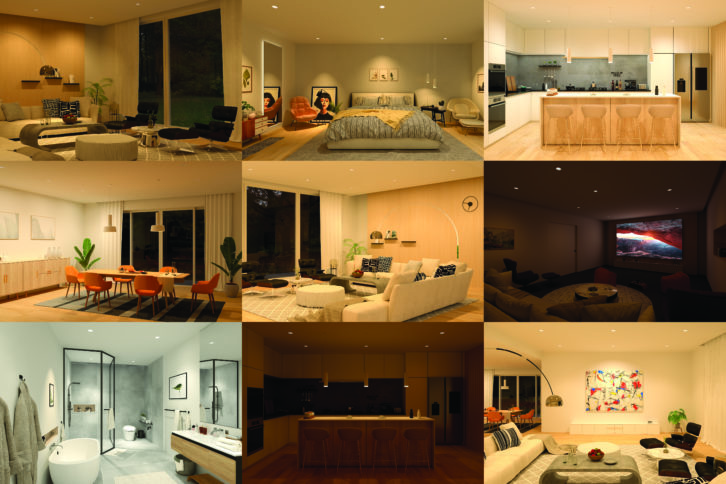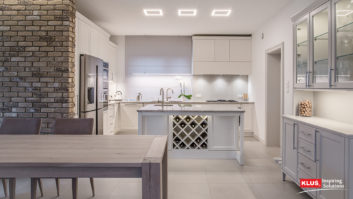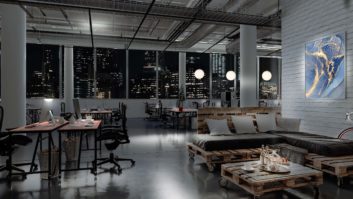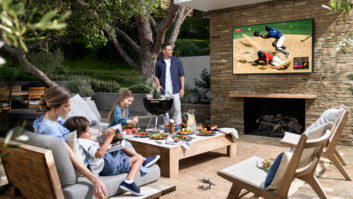
As one of the first light fixture manufacturers to work with CI channel dealers, DMF Lighting understands what is important to its partners. Over the years, I’ve had a lot of opportunity to speak to customers about real-world lighting challenges and opportunities that impact their working relationship with the design-build community and homeowners. The following is a list of recommended applications for modular lighting solutions to ensure a quality user experience focused on aesthetics, performance, and price point.

Scenario 1: The interior designer on a project requested a lighting plan that would make the space beautiful, useful, and enjoyable, with a minimal footprint.
Solution: Lighting is about enhancing the things that people love about their homes. Whether it’s finishes, furniture, or architectural features, a modular system provides the flexibility for the best end result. You can incorporate general downlights for ambient illumination, task lighting for functional use, and showcase art and other elements with adjustable accent lights — all while maintaining aesthetic consistency in the ceiling. Furthermore, if design changes from rough to finish, a modular solution allows you to change things such as trim aesthetic, color temperature, output, etc., with limited labor and cost.
Related: The Art of Lighting Design
Scenario 2: A homeowner requested a warm and cozy living space, but doesn’t know what that entails. How would an integrator best present their recommendations for a modular lighting solution?
Solution: This is a situation where a lighting option such as our DMF Warm Dim technology stands out. This provides the familiarity of incandescent, where the color temperature warms as fixtures are dimmed, all while maintaining the benefits of LED. It delivers longevity and efficiency. You can create a very pure and accurate visual experience in the room with the added value of a fireplace/fireside-type feel when a warm dimming solution is employed in the process.
Scenario 3: My architect and builder partners are looking for a lighting plan for a new modern home that has wraparound windows in the open living room, dining room, and kitchen.
Solution: This is where placement and purpose are very important. Lighting is often done for architecture, not for people, which is why you see symmetric rows across open concepts on many floor plans. Focus on how people will interact with the space to determine the right solution. Illuminate vertical spaces, including window treatments. Use task lighting to illuminate countertops and the dining table. Highlight cabinets, furniture, and architectural elements like fireplaces and other focal points. Given these different use cases, the right fixture will be needed for each job. The options are to either specify a solution that locks you into specific configurations or something that provides consistent aesthetics and illumination while allowing you to fine tune based on the application. Modularity is the best pursuit. It provides the correct solution while maintaining flexibility as things develop over the life of a project.
Scenario 4: We are working with an architectural firm that specializes in retrofitting New England farm houses that have historical value.
Solution: Providing architectural downlighting in a retrofit solution is a difficult but satisfying task. That’s why the lighting modules in our modular solution can be used in new construction applications as well as in existing downlight housings or in old work applications with a blank ceiling. Being able to provide a solution that includes 1 percent dimming, soft on/off, warm dim, and high CRI will provide the experience of incandescent, which is typical in these types of homes, while reaping the benefits of LED. A compact form factor will minimize or eliminate the need to open up the ceiling of a historical home in order to achieve the desired performance.
Related: Follow the Light
Scenario 5: The homeowners have a tremendous amount of expensive art in their home and want to invest in the right lighting plan to show off their collection.
Solution: Properly illuminating art calls for high color fidelity, adjustability, and optical control. For example, our DID4 provides 93+ CRI, up to 45 degrees of tilt, and has field-changeable optics and accessories. Customers can control the light with optics ranging from 15 degrees to 40 degrees and options like hex louvre’s and linear spreads can be used to fine tune how the art is lit and how the fixture looks in the ceiling. This applies to paintings and sculpture. If the art plan changes over time, modifying these characteristics is simple and inexpensive.
These scenarios provide some general guidance, but it’s not an exhaustive list to fit the wide variety of applications today. Every job requires the right tools. CI channel partners should consult with a lighting designer for proper placement.







